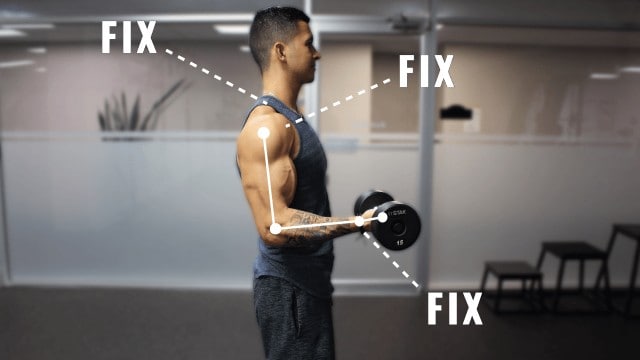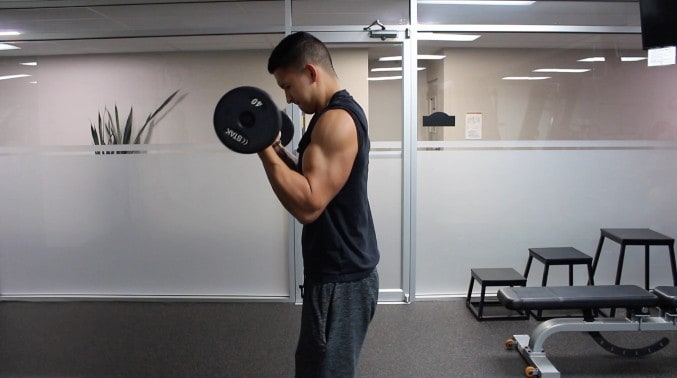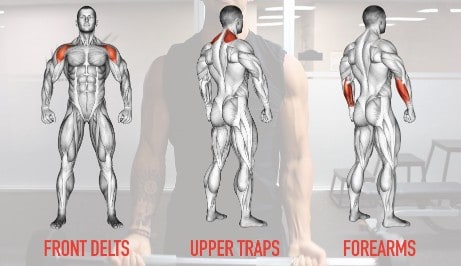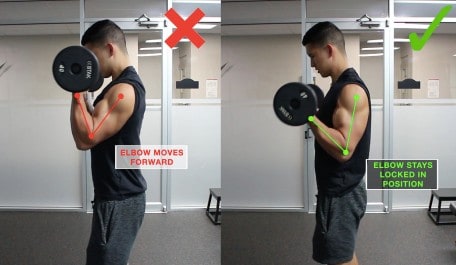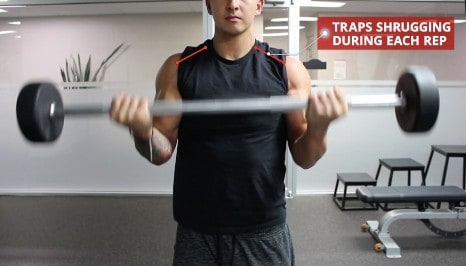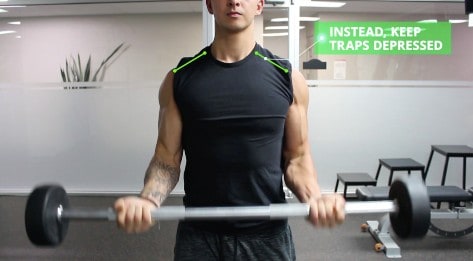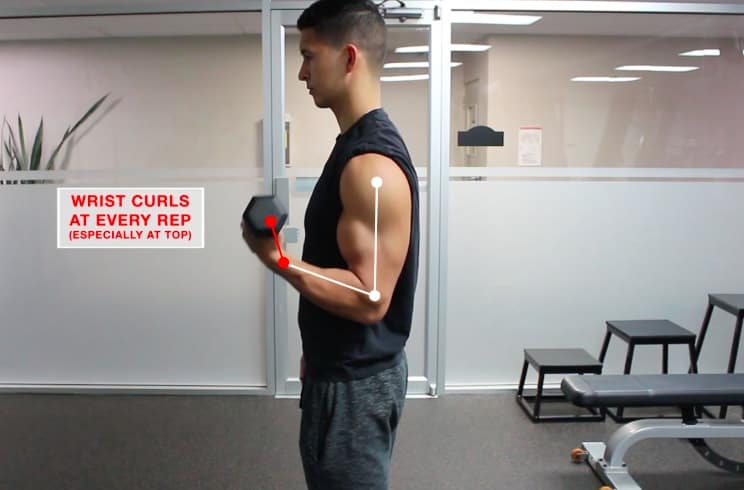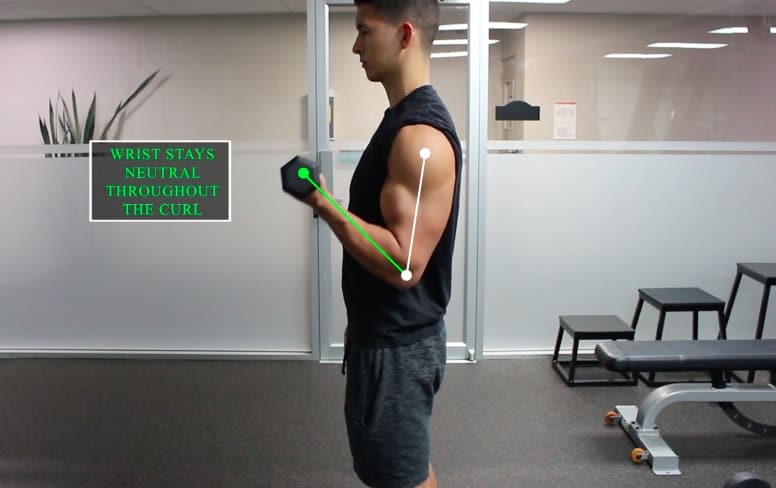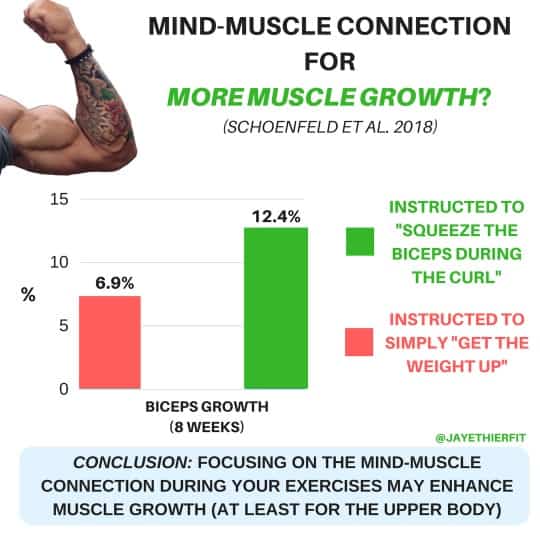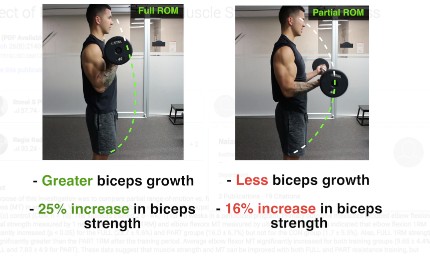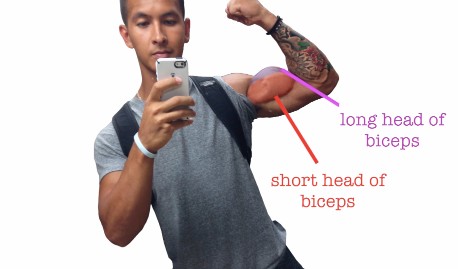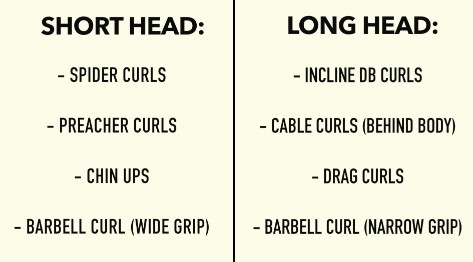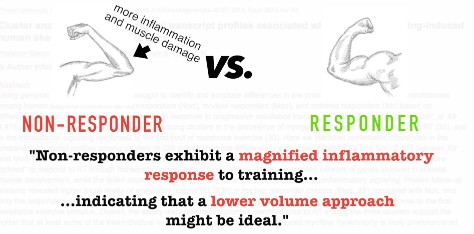How to Get Bigger Biceps (5 Mistakes You're Probably Making)
If you want to learn the truth behind why your biceps aren't growing, then you need to read this article.
When it comes to which muscle groups contribute the most to an aesthetic and attractive physique, the biceps are definitely amongst the top of the list.
The biceps, when well developed, will help contribute to the overall fullness of the arm and creates a prominent peak when flexed.
As seen above, I've managed to achieve a decent set of biceps - but they weren't always like that for me. As with many others, despite the biceps being probably the most trained muscle, it’s also one of the more stubborn muscle groups to develop.
Why is this? Well mainly because aimlessly picking up a dumbbell and curling it likely isn’t going to be enough to provide you with the biceps development you’re looking for.
Instead, you need to pay close attention to how exactly you’re performing your biceps workouts and use a more methodological approach to train them.
Look at this screenshot of me curling for example.
If you can’t spot at least 2 of the mistakes I’m making, then chances are you’re probably making one of them which might very well be the mistake sabotaging your growth.
Therefore, in this article I’ll go through 5 of the most common mistakes people make that hinders biceps growth.
Looking for a training program that'll help you avoid these common lifting mistakes altogether? I've got just the thing for you. Every BWS program is designed to help you transform your physique in the safest, most time-efficient manner. And best of all? It's all rooted in science. For more information on how BWS programs can help you look better - FAST:
Click the button below to take my analysis quiz to discover the best program for you:
↓
Mistake #1: Letting Other Muscles Take Over
The first and probably the most common mistake is letting other muscles takeover and "steal" tension from the biceps during your curling exercises (which is something that I was unknowingly doing for a very long time).
And the 3 main culprits for this are the front delts, upper traps, and forearms.
But luckily, these can all be quickly fixed with simple tweaks in your form.
Front Delts
You can easily tell if your front delts are taking over if your elbows move forward as you curl. Although a few degrees of movement is normal and expected during a curl since the biceps also weakly assist in shoulder flexion, once it becomes excessive is when it becomes a major problem since it takes tension away from the biceps.
So what you want to do instead is lower the weight and ensure that you’re keeping your elbow locked in place and pinned to your side throughout the curl like so.
This will enable your biceps to now take on almost the entire load and minimize the involvement of the front delts.
If you're still struggling with this then you can try performing curls with your back and elbows against a wall which physically forces your elbows to stay locked in place.
Upper Traps
The next muscle, the upper traps, is a little more subtle to catch but is just as common.
You can tell if your traps are taking over the curl if you’re shrugging your shoulder up towards your ears every time you curl.
This once again takes a lot of the tension away from the biceps and is an indication that you should probably lower the weight.
Instead, you want to depress your traps by bringing your shoulders down and away from your ears before your curl and keep them in this depressed position throughout the movement.
Doing so will shift a lot of the tension back to the biceps.
Forearms
Finally, letting your forearms take over happens when you flex your wrists as you curl the weight.
This not only shifts tension away from the biceps but also puts your wrists at a mechanical disadvantage.
Instead, you want to keep the wrists in a neutral or slightly extended position to both increase wrist stability and place more tension on the biceps.
Mistake #2: Failing to Establish a Mind-Muscle Connection
Although the previous tip will dramatically improve the tension placed on the biceps, it’s also important that you actually feel and focus on the biceps working during your exercises - and yes this will make a huge difference in your growth.
For example, a recently published 2018 study by Schoenfeld and colleagues analyzed the effect of a “mind-muscle connection” on the muscle growth of 30 college-aged men. All participants performed 4 sets of arm curls and leg extensions for 8 to 12 RM on 3 non-consecutive days per week, with sets carried out to muscular failure.
One group (the mind-muscle group) was instructed to “squeeze the muscle” during each rep whereas the other group was simply instructed to “get the weight up”.
The result? After 8 weeks, the mind-muscle group experienced almost double the biceps growth compared to the other group!
So rather than just trying to curl the weight up, you need to focus on really feeling the biceps working which often will require you to set your ego aside and lighten the weight you use.
And one helpful cue to think about as you curl is to "think about squeezing the bar into your body". So think about squeezing your biceps to move the bar towards your body as opposed to thinking about just simply lifting the weight. Doing so will help enhance the contraction of your biceps during each rep.
Mistake #3: Not Utilizing a Full Range of Motion
Although as mentioned in my biceps peak article, a partial range of motion can be used to target specific regions of the biceps, generally you want to use a full range of motion to optimize overall development of the biceps.
This is because several studies have favoured the use of full range of motion over partial range of motion for both strength and hypertrophy.
For example, one 2012 study by Pinto and colleagues found that in 40 male subjects, using a full range of motion during the biceps curl led to significantly greater hypertrophy of the biceps AND a 25% increase in strength as opposed to just 16% in the partial range of motion group.
You can implement this when curling by contracting the triceps at the bottom of every rep to ensure that the biceps are fully lengthened before each rep, which will also help maximize biceps recruitment in the following rep due to the concept of reciprocal inhibition.
Not sure how you can train with a full range of motion for all exercises in your training routine? Don't worry. Our 3-on-1 coaching program can help. You'll not only have a coach who'll guide you through the dos and do not's of each exercise's execution but also a dietitian to customize your nutrition - plus, there's me to answer your questions! Find out more about how we can help you achieve your dream physique below:
Click the button below to find out more about the 3-on-1 coaching program:
↓
Mistake #4: Not Targeting Both the Short Head and the Long Head
I’ve made this point clear in a few of my past articles that in order to get well-rounded development of the biceps, you need to train both the short head and the long head.
We can emphasize the short head more by utilizing biceps exercises where the elbows are moved in front of the body which causes the long head to enter active insufficiency.
Exercises that accomplish this are spider curls, preacher curls, chin-ups, and so on. And on the other hand, we can emphasize the long head more by utilizing biceps exercises where the elbows are moved behind the body.
Exercises that accomplish this are incline dumbbell curls, behind-the-body cable curls, and drag curls.
But rather than trying to perform all these exercises, I suggest that for those past the beginner stage you can include one to two exercises for the short head and one to two exercises for the long head in your overall routine and focus on progressing those movements overtime.
Mistake #5: Doing Too Much Volume
One of the first things people do if a muscle isn’t responding well is increase the volume for that muscle group. And although we know based on Brad Schoenfeld’s 2016 meta-analysis that up to a certain point more volume means more growth, you have to be aware of how your volume is accumulating through other movements.
For example, on your back or pull days, your biceps are heavily involved in almost every single exercise you’d typically do. Adding in tons of isolation exercises on top of this will very likely lead to the opposite effect you’re looking for.
This is especially in non-responders since research shows that they typically exhibit a magnified inflammatory response to training compared to high-responders.
Simply meaning that they exhibit more inflammation and muscle damage than usual after training and indicates that a lower volume approach may in fact be ideal.
So instead, if you aren’t seeing the results you want despite increasing volume, take a step back and decrease the volume dedicated to your biceps and see how they respond.
Instead of for example adding in 4 or more biceps isolation exercises to your overall routine, stick to just a couple and focus on progressively overloading those as well as your main pulling movements. It’s very likely that you’ll find your biceps respond much better to this adjusted level of volume.
The Takeaways
To sum the article up, here are the key points you should takeaway:
- Ensure other muscle groups aren't taking over by tweaking your form (elbows locked, traps depressed, wrists neutral).
- Focus on feeling the biceps working during each rep.
- Use a full ROM (flex triceps at the bottom of every rep).
- Use exercises that target the short head and the long head (e.g. 1-2 exercises each).
- If you're not responding well to your current biceps training, try decreasing the volume for the biceps.
That’s it for this article! Feel free to let me know if you have any questions in the comments down below. And give me a follow on Instagram , Facebook , and Youtube where I’ll be posting informative content on a more regular basis. Cheers!
And for those looking for a complete step-by-step program that uses science to show you how to properly train AND eat week after week to transform your body in the most efficient and injury-free way possible, then:
Click the button below to take my analysis quiz to discover the best program for you:
↓






